 |
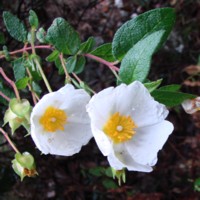 |
Cistus salvifolius
Sageleaf rockrose
Catalan: Estepa borrera
Shrub with dull green hairy leaves, rough to the touch and slightly aromatic.
Blooms have a less crumpled appearance than other cistuses and last just one
single day. Widespread in sandy soils, scrub and garrigue.
|
|
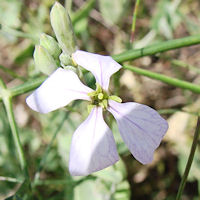 |
Raphanus raphanistrum
Wild Radish, Jointed Charlock
Rave bord, Rave petit (Cat.)
Attractive small four-petalled flower with dark violet veining.
Sometimes claimed as an ancestor to the edible radish, Rahpanus sativus
it has a single but less well developed taproot. Long seedpods. Spring to late summer. Widespread.
Roadsides and disturbed ground.
|
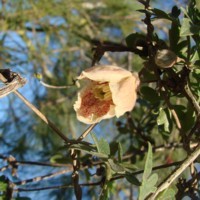 |
Clematis cirrhosa var. balearica
Clematis
Member of the buttercup family. Fragrant, evergreen climber with small, glossy, fern-like foliage with dark-green leaves, and small cup-shaped cream flowers, with brownish-orange speckles inside. Silky feathery seedpods.
Flowering late winter early spring. Widespread in hedgerows and scrub. |
 |
Daucus carota
Pastanaga borda (Cat.)
Wild Carrot, Bird’s Nest, Queen Anne’s Lace.
Biennial plant very variable growing up to 1 m. Flower heads are initially pale pink,
often with dark red floret in the centre, before turning white on opening.
The head becomes concave, like a bird’s nest as it turns to seed, detaching from the
plant to become tumbleweed.
|
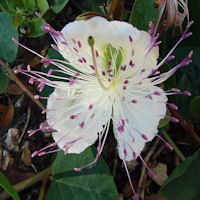 |
Capparis spinosa
Taparera
(Cat.)
Perennial with unmistakable showy large white-pinkish flowers.
Draught tolerant. Caper plants cling coastal cliffs and to old
Palma walls and the medieval limestone ramparts in Alcúdia.. Plants
over 30 years old are still productive. The pickled bud is the edible caper,
once cultivated as an important Island crop.
|
 |
Urospermum dalechampii
Amargot, Cuixa barba, Cuixa de dona
(Cat.)
Mediterranean Daisy.
Perennial largish beige-lemon flowers. Petals with darker points and smooth velvety stems.
Found along roadsides, in hedgerows and fallow fields
|
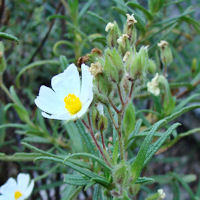 |
Cistus monspeliensis
Estepa llimonenca, Estepa negra. (Cat.)
Rockrose.
White flowers with yellow centre. Their long thin leaves are sticky to the touch.
Rubbing them between the fingers releases one of the most characteristic Mediterranean
aromas. Plentiful throughout the Island particularly waysides and garrigues.
|
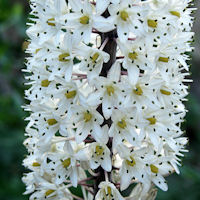 |
Urginia maritima
Ceba d'ase, Ceba marina, Ceba porrera, Ceba rotja. (Cat.)
Sea squill, red squill, sea onion.
It has a very large bulb that can reach up to three kilos in weight. Long stalk, up to a metre in height, with a flower head whose lower florets open first. Leaves die back in summer. Flowers with the rains. Medicinal. Toxic.
Widespread in rocky places, mountains as well as coastal areas.
|
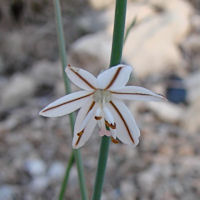 |
Asphodelus fistulosus
Cebollí, Cibolla, Porrassí (Cat.)
Typical asphodelus flower, cream with dark red veining, but borne singly along
the length of the stem. Small plant found on roadsides, waste ground. Widespread,
flowering from March – April.
|
|